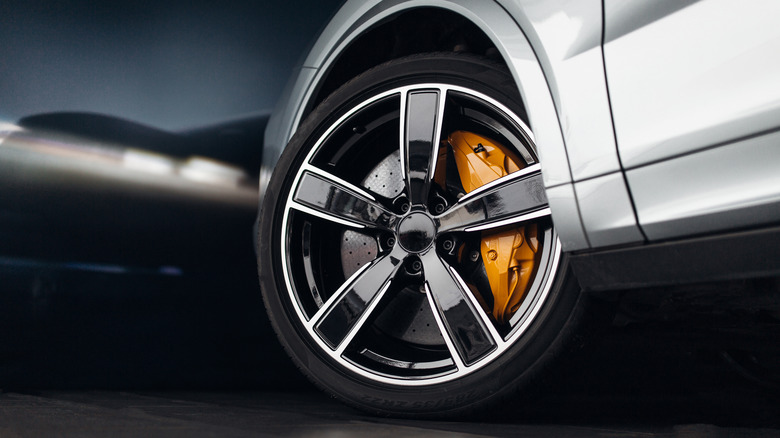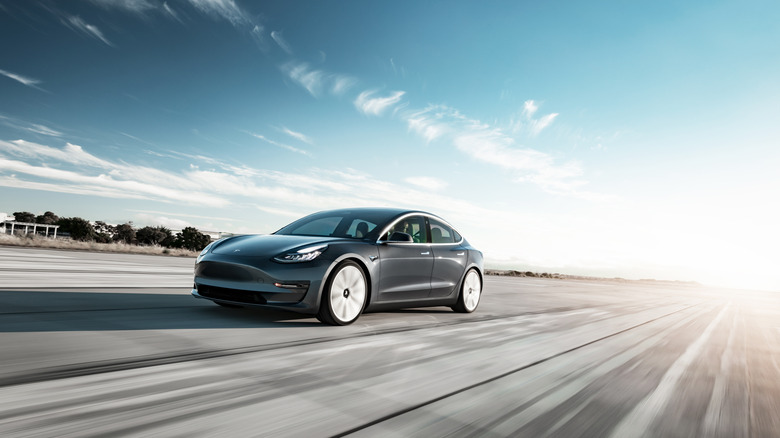Why Regenerative Braking Is So Important For EVs
You may have heard that electric cars have actually been around way longer than the gasoline-chugging vehicles we all love. However, are you aware that modern EVs are not the first to utilize regenerative braking? Recapturing kinetic energy and converting it to electrical power (or regenerative braking) when a vehicle is braking, decelerating, or traveling downhill has been used on railroads since the 1930s, particularly on the train carriages of the Baku-Tbilisi-Batumi railroad, also known as the Georgian rail route or the Transcaucasus Railway.
Even back then, regenerative braking served the same purpose: to improve efficiency and performance. In a gas-powered car with conventional hydraulic brakes, stepping on the pedal increases hydraulic pressure to squeeze the brakes pads on the rotor or brake discs and create friction to slow down or stop the vehicle. The brakes transform kinetic energy (or forward motion) into thermal energy or heat. When heat from braking dissipates into the atmosphere, it is lost forever.
Regenerative braking captures the wasted kinetic energy into electricity when a vehicle slows down. The recaptured energy is stored in a battery for future use, helping to improve performance, efficiency, or both, depending on the system's design.
Why is regenerative braking necessary for EVs?
According to the Deloitte 2022 Global Automotive Consumer Study, 69% of Americans said their next car won't have anything to do with electrification, and only 5% want a new EV. There are two reasons behind this: cost and driving range. The latter is most important, since a higher driving range eliminates "range anxiety."
In J.D. Power's U.S. Electric Vehicle Experience (EVX) Ownership Study published in 2021, the battery and driving range are the most cited factors that consumers look into when buying an electric car. "It's all about peace of mind," said Brent Gruber, senior director of global automotive at J.D. Power. "Even though most owners drive less than the stated range of their vehicle's battery, they still want to know that the actual range is close to the stated battery range."
Since the battery pack is the most expensive component in a modern EV (not to mention the most cumbersome to boot), automakers need to optimize the battery size to keep the costs and weight down. And even though regenerative braking is only 16% to 70% efficient in recapturing kinetic energy (depending on driving style, road gradient, temperature, and other factors), it does extend the driving range marginally, helping an EV travel further without stopping to charge the battery.
How does regenerative braking work?
In modern hybrid and electric vehicles like the Toyota Prius, regenerative braking systems can drip-charge the batteries without plugging into the mains. Electric cars have one, two, or multiple electric motors to provide thrust. When you step on the accelerator pedal, the motors draw power from the battery. But as soon as you lift your foot off the go pedal, the electric motor disengages and runs backward, acting as a generator as it recaptures kinetic energy and recharges the battery pack.
The driver can typically choose the amount of regenerative braking by fiddling with a control stick or gear lever. The most aggressive setting captures and stores more energy in exchange for more substantial braking power, enough to bring the vehicle to a complete stop. On the other hand, the mildest setting applies "softer" braking power while regenerating a smaller amount of energy. It's why EVs are capable of one-pedal driving, the ability to slow down or stop the vehicle without using the hydraulic brakes.
Regenerative braking also benefits the environment. Though electric vehicles don't have combustion engines that emit harmful pollutants, the brakes and tires are two of the most critical non-exhaust source emissions factors, according to the California Air Resources Board (CARB). Early studies have shown that automotive brakes emit 35% to 60% of the copper in California's watershed. California and Washington passed laws in January 2021 that prohibit the sale of automotive brakes with more than a 5% copper content.


